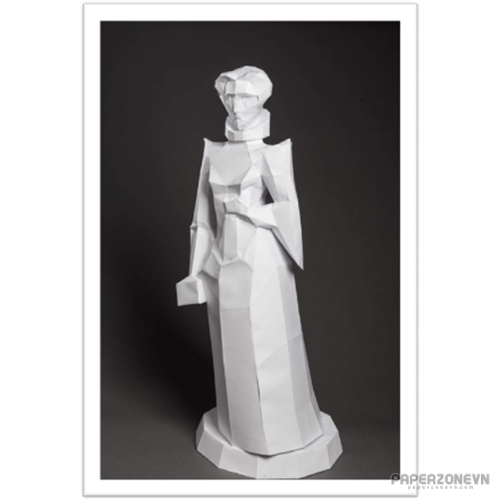- Thumbnail
-

- Resources
- https://twitter.com/welovehistory
- Author
- Historic Scotland, 2015
- Printed File Format
- Page(s)
- 33
- Instruction Format
Sponsored:
Mary Queen of Scots statue at Linlithgow Palace papercraft

Mary Stuart, known to history as Mary, Queen of Scots, was one of the most fascinating and controversial monarchs of 16th century Europe. At one time, she claimed the crowns of four nations - Scotland, France, England and Ireland. Her physical beauty and kind heart were acknowledged even by her enemies, yet she lacked the political skills to rule successfully in Scotland. Her second marriage was unpopular and ended in murder and scandal; her third was even less popular and ended in forced abdication in favor of her infant son. She fled to England in 1568, hoping for the help of her cousin, Elizabeth I. Her presence was dangerous for the English queen, who feared Catholic plotting on Mary's behalf. Mary never met her cousin and remained imprisoned for the next nineteen years. She was executed in 1587, only forty-four years old. By orders of the English government, all of her possessions were burned. In 1603, upon Elizabeth's death, Mary's son became king of England as James I.
There is a bit of mystery about the origin or the statue and naming of this property in Fleet Street London.. Best i can make out is that It appears that the building dates back to 1905. A nearby pub sign says "the building next door, Mary Queen of Scots House was built in 1905. The statue of Mary Stuart a romantic idea of the developer Sir John Tollemache MP, who was a great admirer of Mary Q of S." In addition, the building was designed for a Scottish Insurance Company

Mary Stuart, known to history as Mary, Queen of Scots, was one of the most fascinating and controversial monarchs of 16th century Europe. At one time, she claimed the crowns of four nations - Scotland, France, England and Ireland. Her physical beauty and kind heart were acknowledged even by her enemies, yet she lacked the political skills to rule successfully in Scotland. Her second marriage was unpopular and ended in murder and scandal; her third was even less popular and ended in forced abdication in favor of her infant son. She fled to England in 1568, hoping for the help of her cousin, Elizabeth I. Her presence was dangerous for the English queen, who feared Catholic plotting on Mary's behalf. Mary never met her cousin and remained imprisoned for the next nineteen years. She was executed in 1587, only forty-four years old. By orders of the English government, all of her possessions were burned. In 1603, upon Elizabeth's death, Mary's son became king of England as James I.
There is a bit of mystery about the origin or the statue and naming of this property in Fleet Street London.. Best i can make out is that It appears that the building dates back to 1905. A nearby pub sign says "the building next door, Mary Queen of Scots House was built in 1905. The statue of Mary Stuart a romantic idea of the developer Sir John Tollemache MP, who was a great admirer of Mary Q of S." In addition, the building was designed for a Scottish Insurance Company
Sponsored: Google Advertising
